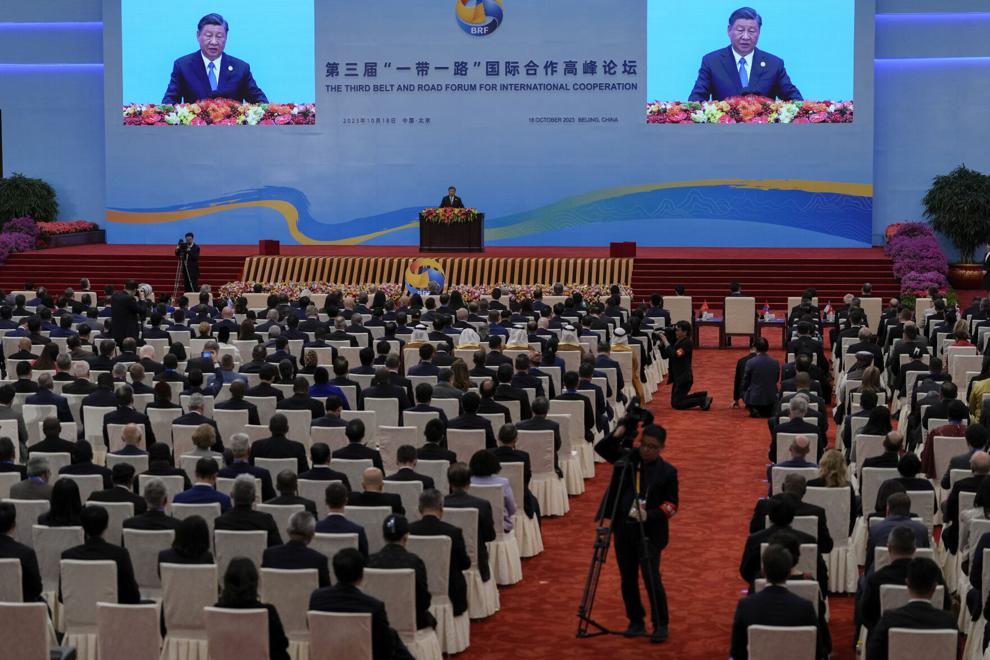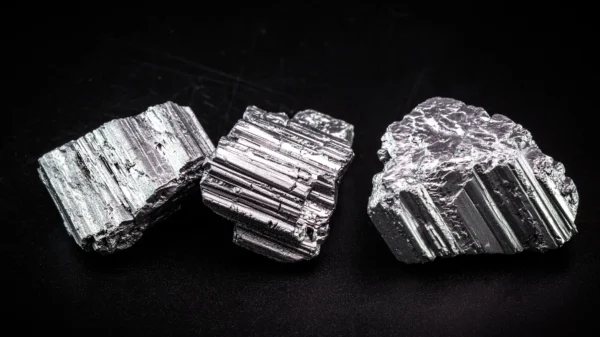The Taliban government wants to attract investors to Afghanistan and is planning to join the China-Pakistan Economic Corridor and Belt and Road Initiative (BRI) during this year’s forum held in Beijing.
On Thursday, Afghanistan’s acting commerce minister Haji Nooruddin Azizi said during the Belt and Road Initiative forum on Oct. 17-18 that it would send representatives to China to discuss further details in the upcoming days. The forum was attended by 130 countries and marked the 10th anniversary of its establishment.
Aziz talked about his plans to build a road through the Wakhan corridor, in northern Afghanistan, to provide direct access to China. However, what is of importance to both countries is the possible extension of the China-Pakistan Economic Corridor (CPEC) into Afghanistan.
Taliban spokesperson Akhundzada Abdul Salam Jawad told Reuters before the meeting that the intention is to “invite large investors”
Read more: Taliban sign 7 large-scale mining contracts for US$6.5B
Read more: China continues to expand global influence in lithium market: S&P Global
Chinese firms gearing up to enter Afghanistan’s untapped mineral sector
Some Chinese companies are already looking at the country’s potential in the energy and mining industries. The Metallurgical Corp of China has had plans for mining operations in Afghanistan after it won exploration rights for the Aynak copper project in 2007. The 30-year lease was granted for US$ 3 billion and has been the largest foreign investment in Afghanistan’s history.
The mine in Mes Aynak –which means “little copper”– is believed to be the world’s second-largest copper source with an estimated deposit of 5.5 million metric tons of high-quality copper ore, according to the Afghan Mining Ministry.
However, political instability and safety issues have halted the project’s development over the years.
In January, Afghanistan saw its first significant foreign investment since the Taliban took over the government in 2021. The Sunni Islamist nationalist government signed a 25-year contract with a subsidiary company of the state-owned China National Petroleum Corporation (CNPC) to allow the company to extract oil from the Amu Darya basin, which stretches between Central Asia and Afghanistan.
The deal carries an investment of US$150 million in the first year and US$540 million over the next three years, Taliban spokesperson Zabihullah Mujahid announced back then.
Last September, the Islamist government also signed mining deals with local companies valued at approximately US$6.5 billion. In the same month, the Taliban Foreign Minister Amir Khan Muttaqi welcomed Zhào Xīng to be the first Chinese ambassador in Kabul.
Although, China has not officially recognized the Taliban as the government of Afghanistan.
The Taliban-run state has been criticized for its unfair and repressive treatment of women, human rights violations, terrorism and overall violent methods. Other countries that have formed relations with the Islamic fundamentalist government include Iran, Russia and Pakistan.

China’s new ambassador to Afghanistan Zhao Sheng shakes hands with Taliban Prime Minister Mohammad Hasan Akhund last September. Photo via Taliban Prime Minister Media Office.
Read more: XCMG Machinery to revolutionize mining with launch of China’s first mining satellite
Read more: China’s mineral resource authority discovers US$3B gold deposit
Belt and Road Initiative celebrates ten years since launch
The Belt and Road Initiative (BRI), launched by China in 2013, is a multifaceted and ambitious global infrastructure and economic development project.
It comprises two main components: the Silk Road Economic Belt, which envisions land-based connections between China and Europe and the 21st Century Maritime Silk Road, which focuses on sea-based trade routes connecting China to regions spanning Southeast Asia to Europe.
The BRI involves extensive investments in infrastructure, including roads, railways, ports and energy pipelines, with the goal of fostering economic cooperation and improving connectivity across participating countries.
While the initiative holds the potential for significant economic benefits, it has also raised concerns about debt dependency, transparency, and geopolitical implications, making it a focal point of international discourse and diplomacy with far-reaching consequences for global economic and geopolitical dynamics.
natalia@mugglehead.com












